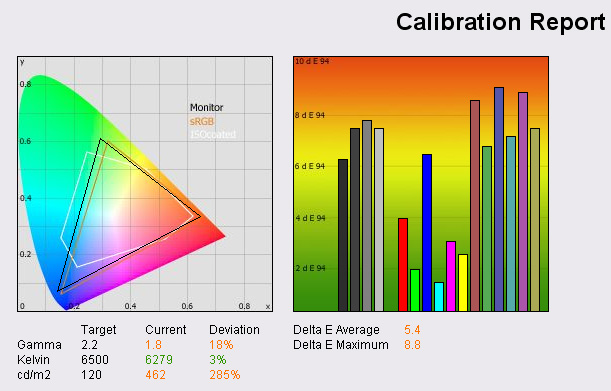Blue Eye Calibration Software
- Posted in:Admin
- 28/03/18
- 66

Introduction It is important to realise when buying a monitor, or any display device for that matter, that the accurate reproduction of colours is not always achievable. Without your display, printer and camera working to the same colour profile you may well find that images look different across different equipment; with varying colours and tone, and sometimes an inaccurate representation of what you are really trying to display. The accuracy of colours can vary greatly from one monitor to the next, and depends on panels used, their technology, the additional components, and factory settings as well as individual graphics cards and how they are set up. As such, apart from monitors designed for critical colour work, it can be quite hard to really set up a screen to display accurate colours. Various software packages exist which can help you calibrate a screen, but mostly serve only to get the screen looking at a comfortable level for the user based on their preferences. These packages are most useful for helping you set the brightness, contrast and gamma levels of the screen however which are important for ensuring comfortable working conditions. It's easy enough to get a screen looking how you would like it to, and many users are not bothered about sacrificing colour accuracy for vibrancy.

How to calibrate your monitor. Still trust your eyes to calibrate? The calibration software can also be installed on more than one machine. Before you use the software for the calibration process or testing. I was impressed with the ease of use of the LaCie Blue Eye Pro and its software. How to calibrate your monitor. Still trust your eyes to calibrate? The calibration software can also be installed on more than one machine.
This particular trend is evident in the way monitors are provided to the main stream home market, often with vibrant colour presets and sometimes even with technologies like Sony's X-Black and NEC's OptiClear which help bring out vibrancy without concern for the accuracy of the colours displayed. Most average users however would rather have more vibrant colours in practice and it can make the screen look more pleasing to the eye for gaming and movies for instance. However, if you want to carry out any colour work or use Photoshop and ensure a good level of colour reproduction, you'll have to consider setting up your monitor properly. Above: LaCie Blue Eye Pro packaging and colorimeter Thankfully there are instruments on the market which can help you do just this, which will guide you through setting up your monitor to ensure colour accuracy, as well as show you how the monitor performs before and after calibration. The is one such device, and being based on a hardware tool from, is considered one of the better devices available. LaCie have combined the Gretag colorimeter device with their own software suite which is easy to use and offers some interesting pre and post calibration analysis.
Unfortunately these devices don't come cheap, with the LaCie retailing at ~£250 in the UK. This means they are out of reach for most average users, and while there are some more budget colorimeters available (Spyder 2 for instance at ~£60), they can't match the performance of the Gretag hardware devices. Above: LaCie Blue Eye Pro packaging, instruction manual, software CD, hardware colorimeter and counter weight and ambient light measurement attachment. The LaCie Blue Eye Pro comes packaged as shown above with software installation CD, the Gretag hardware colorimeter device, a protector clip / ambient light measurement attachment, counterweight and instruction manual.
The software is easily installed and intuitive to use. The actual device itself is reasonably sized and plugs into your computers USB port. The counterweight ensures you can hang it from the top of your screen comfortable during calibration and there are small suction cups on the bottom of the device if you have a screen (CRT mostly) where you can attach it to the screen firmly.
Above: LaCie Blue Eye Pro positioned on monitor thanks to counter weight. Virtua Racing Ps2 Iso. And (right) the underneath side of the device showing the suction cups for attachment to hard coated screens and CRT's. The Software and Configuration I installed LaCie's software suite and followed through the PDF manual provided on the CD.
I decided to first of all analyse several monitors I had with me in my testing environment to establish accuracy of the produced colours as they were set up at present. 300 Dwarves Full Version. I was particularly interested to see the results from my main TFT screen, the Dell 2405FPW, as this was already set up to my liking based on software tools and my perception of the screen. The other screens tested were the NEC LCD20WGX2 and Samsung SM205BW which were both restored to default factory settings along with my graphics card. Before you use the software for the calibration process or testing, it is necessary to preset a number of options which you are aspiring to with the display. It involves first of all identifying which values you are aiming for with gamma, colour temperature and luminance. Gamma of 2.2 (default for computer monitors), colour temperature of 6500k (daylight) and luminance of 120 cd/m2 (recommended for LCD screens in normal lighting conditions) are preferable in most cases and you can preset these within the software in the 'settings' section. Your subsequent calibration steps will then aim towards these as values where applicable and testing assumes these are the target values you are looking to reach.